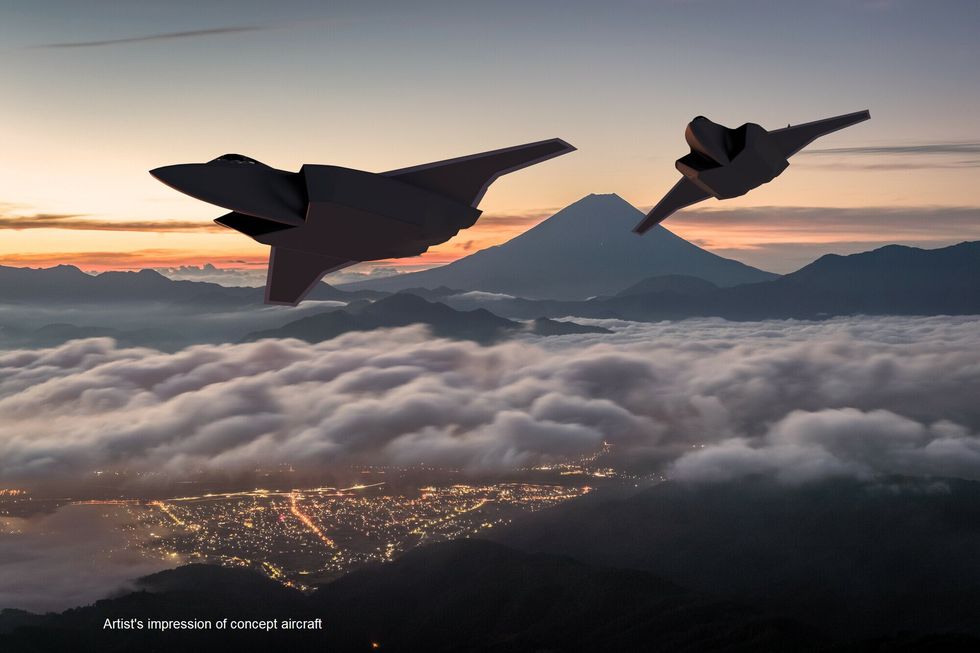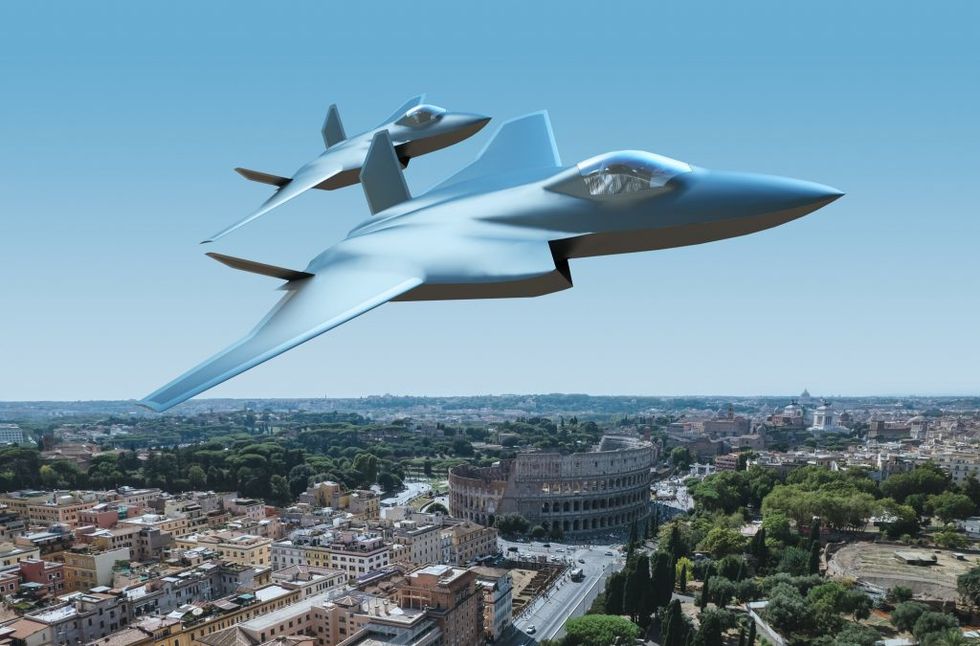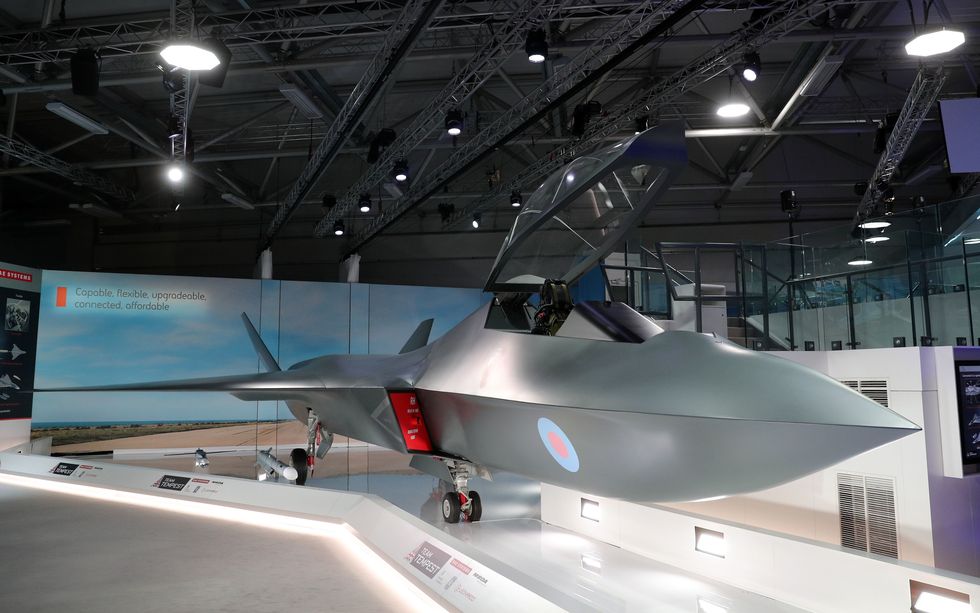Japan, the U.K., and Italy have teamed up to produce a next-generation fighter jet.
The Global Combat Air Program will pool the resources of all three countries to build a common fighter.
GCAP is one of at least two sixth-generation fighters under development.
Three of the world’s major powers announced an initiative last week to develop a new fighter jet. Japan, the United Kingdom, and Italy will develop the new plane under the Global Combat Air Program, or GCAP, which will leapfrog fifth-generation aircraft such as the F-35 to create a new, sixth-generation jet by 2035.
On Friday, the Prime Ministers of Japan, the U.K., and Italy made the announcement in a joint statement, noting that the program is meant to include “future interoperability with the United States, with NATO and with our partners across Europe, the Indo-Pacific, and globally.”

Under GCAP, all three countries have agreed to pool their resources, producing a single common fighter jet. Previously, Japan had committed to building the F-X fighter, while the U.K. and Italy were collaborating on the Tempest fighter.
According to the U.K. Ministry of Defense, the three countries, “will now work intensively to establish the core platform concept and set up the structures needed to deliver this massive defence project, ready to launch the development phase in 2025.” The trio will also work out the cost-sharing agreement before 2025, nailing down who pays for what as the aircraft goes through what will undoubtedly be a very expensive development period.
None of the three countries have committed to a first-flight date, though an early prototype of Tempest was supposed to fly in 2027, and a prototype of the F-X by 2028. This will leave the better part of a decade to develop the avionics, combat systems, and weapons that will make GCAP a world-class fighter. It’s a notoriously complex and lengthy process: the F-35, for example, first flew in the early 2000s, but was not declared combat-ready until 2015.

In addition to announcements from the three countries, notional images were released of GCAP flying above all three countries: a Royal Air Force GCAP flying over the Thames River, the Palace of Westminster, and Big Ben; an Italian Air Force version flying over the Colosseum of Rome; and a Japan Air Self Defense Force GCAP with Mount Fuji in the background.
All three countries describe GCAP as a “next-generation” fighter, one that will be technologically a generation ahead of the current fifth-generation jets. While the three countries all currently fly different versions of the F-35 Joint Strike Fighter, the F-35 doesn’t meet all of their requirements. Another factor in building GCAP is a desire to preserve the fighter jet industrial base of all three countries, create jobs, and develop a highly desirable export product only a few other countries can offer.

Although it’s very early in the program, we can discern a few GCAP design details by looking at the F-X and Tempest programs. Both were twin-engine, single-seat designs, which would result in larger, heavier, but longer-ranged and more powerful fighter jets. Both were stealth designs with flattened surfaces, faceting, and canted, almost flat tail fins. The Tempest would carry the advanced Meteor air-to-air missile, while the F-X was slated to carry the Joint New Air-to-Air Missile, which incorporated Meteor’s advanced ramjet propulsion technology.
F-X and Tempest coincided both in time frame and in some design goals. Japan wanted a large, long-range fighter that could protect Japan’s airspace from threats in China, Russia, and North Korea. The U.K. and Italy, which frequently deploy out of their respective countries, want a similar fighter, but prize long-range for expeditionary purposes, for example carrying out combat missions against the Islamic State or patrolling NATO’s long border with Russia. The Japanese version of GCAP may end up being a little more optimized for air-to-air combat, while the European version might split the air-to-air and air-to-ground missions more evenly.

Right now, there are three known sixth-generation fighters under development: GCAP, the Air Force’s Next Generation Air Dominance fighter, and a U.S. Navy program by the same name. China, racing to catch up with the West, is almost certainly working on at least one sixth-gen aircraft.
Each generation is defined by a set of technological capabilities that builds on the previous generation. GCAP and other sixth-generation fighters will include fifth generation features such as stealth and battlefield networking, while new features could include AI pilot assistance, using the nose-mounted radar for jamming and other electronic attack missions, uncrewed operation, laser weaponry, and the ability to control multiple autonomous drones.
Modern fighter jets are extremely expensive to develop. Only the United States and China have independently developed and fielded fifth-generation fighters; Russia has flown the Sukhoi Su-57 “Felon,” but has not been successful transitioning it to an operational fighter. Sixth-generation fighters won’t be any easier, but pooling the resources of Japan, the U.K., and Italy will reduce costs and put a world-class fighter within reach of all three.
 iTechBahrain Information Technology Digital Marketing Web & Mobile Development Services
iTechBahrain Information Technology Digital Marketing Web & Mobile Development Services